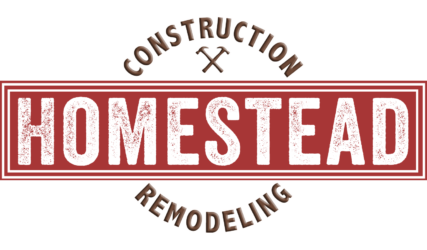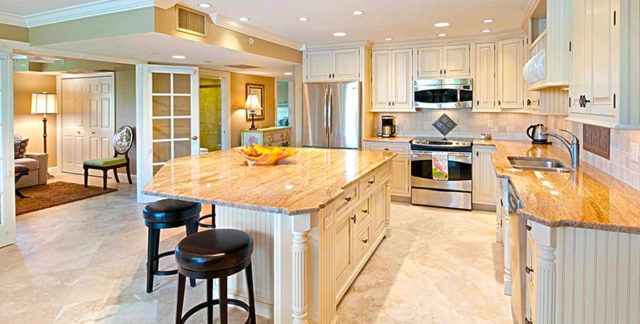Your kitchen is more than just a place where meals are prepared—it’s the heart of your home. Whether it’s sharing family dinners, entertaining friends, or simply enjoying a cup of coffee in the morning, your kitchen plays a vital role in your daily life. A kitchen remodel can completely transform the functionality and aesthetics of this space, making it more efficient, stylish, and tailored to your lifestyle. In this guide, we’ll explore everything you need to know about kitchen remodeling, from planning and design to budgeting and execution.
Why Remodel Your Kitchen?
Before jumping into a kitchen remodeling project, it’s important to understand why you want to upgrade this space. Some of the most common reasons homeowners choose to remodel their kitchens include:
- Outdated Design: Over time, kitchens can start to feel worn and outdated. A remodel allows you to modernize the look and feel of your kitchen with new cabinetry, countertops, flooring, and appliances.
- Improved Functionality: If your current kitchen layout doesn’t work for you, remodeling gives you a chance to create a more efficient and practical space. Whether it’s adding a kitchen island, expanding your countertops, or upgrading appliances, the possibilities are endless.
- Increasing Home Value: A kitchen remodel is one of the most effective ways to boost your home’s resale value. A beautiful, updated kitchen appeals to buyers and can yield a high return on investment.
- Enhanced Storage: If you’re constantly struggling with cluttered countertops or disorganized cabinets, a remodel can give you more storage space and better organization solutions.
- Energy Efficiency: Upgrading to energy-efficient appliances and lighting can save you money on utility bills while being environmentally friendly.
Steps to Planning Your Kitchen Remodel
A successful kitchen remodel requires careful planning and preparation. Here are the essential steps to consider when starting your project:
1. Set a Budget
The first step in any remodeling project is determining how much you’re willing to spend. Your budget will guide your decisions on everything from materials and finishes to appliances and labor costs. Consider breaking down your budget as follows:
- 30-40% for cabinetry
- 15-20% for appliances
- 10-15% for countertops
- 10% for flooring
- 5-10% for plumbing and electrical work
- 10-15% for labor and contingencies
Always plan for unexpected costs by setting aside an additional 10-20% of your total budget.
2. Define Your Needs and Priorities
Think about your goals for the remodel and prioritize what matters most to you. Ask yourself:
- Do you want more storage space?
- Are new appliances a priority?
- Is your kitchen layout functional, or does it need to change?
- Do you want a modern, traditional, or rustic design?
Clearly defining your priorities will help you make decisions throughout the project.
3. Choose a Layout
The layout is a critical part of your kitchen remodel because it determines the flow and functionality of the space. Popular kitchen layouts include:
- L-Shaped: Great for small to medium-sized kitchens, providing ample counter space and a flexible work triangle.
- U-Shaped: Ideal for larger kitchens, offering plenty of storage and workspace.
- Galley: A practical option for narrow kitchens with parallel countertops and cabinets.
- Open-Concept: Removing walls can create a seamless flow between the kitchen and adjacent living or dining areas.
4. Hire a Professional
While DIY projects can save money, kitchen remodeling often requires expertise in plumbing, electrical work, and structural changes. Hiring professionals like contractors, kitchen designers, and architects can ensure your project is completed efficiently and safely.
5. Select Materials and Finishes
Choosing materials is one of the most exciting parts of remodeling, but it’s easy to get overwhelmed by options. Key elements to focus on include:
- Cabinets: Custom, semi-custom, or stock cabinets in materials like wood, laminate, or MDF.
- Countertops: Options include granite, quartz, marble, laminate, and butcher block.
- Flooring: Hardwood, tile, vinyl, or laminate depending on your style and budget.
- Backsplash: A decorative and practical addition that protects your walls—consider subway tile, glass, or stone.
- Lighting: Layered lighting, such as recessed lights, pendant lights, and under-cabinet lighting, enhances functionality and aesthetics.
6. Choose Appliances
Modern appliances not only add convenience but can also improve energy efficiency. Look for Energy Star-rated appliances, smart features, and finishes like stainless steel, matte black, or custom panels to complement your kitchen design.
Conclusion
A kitchen remodel is an exciting opportunity to enhance both the functionality and beauty of one of the most important spaces in your home. Whether you’re looking to modernize an outdated kitchen, increase storage, improve energy efficiency, or simply create a space that better suits your lifestyle, remodeling your kitchen can have a significant impact on your daily routines and the overall value of your home. The key to a successful kitchen remodel is thorough planning. From setting a realistic budget to choosing the right materials and designs, each decision will shape the final outcome. It’s essential to work with experienced professionals to ensure the remodel meets both your aesthetic desires and functional needs. Remember, the heart of your home deserves to be a place where you feel inspired, comfortable, and efficient. With the right approach, your kitchen remodel can turn your culinary space into a stunning, enjoyable area for years to come.

